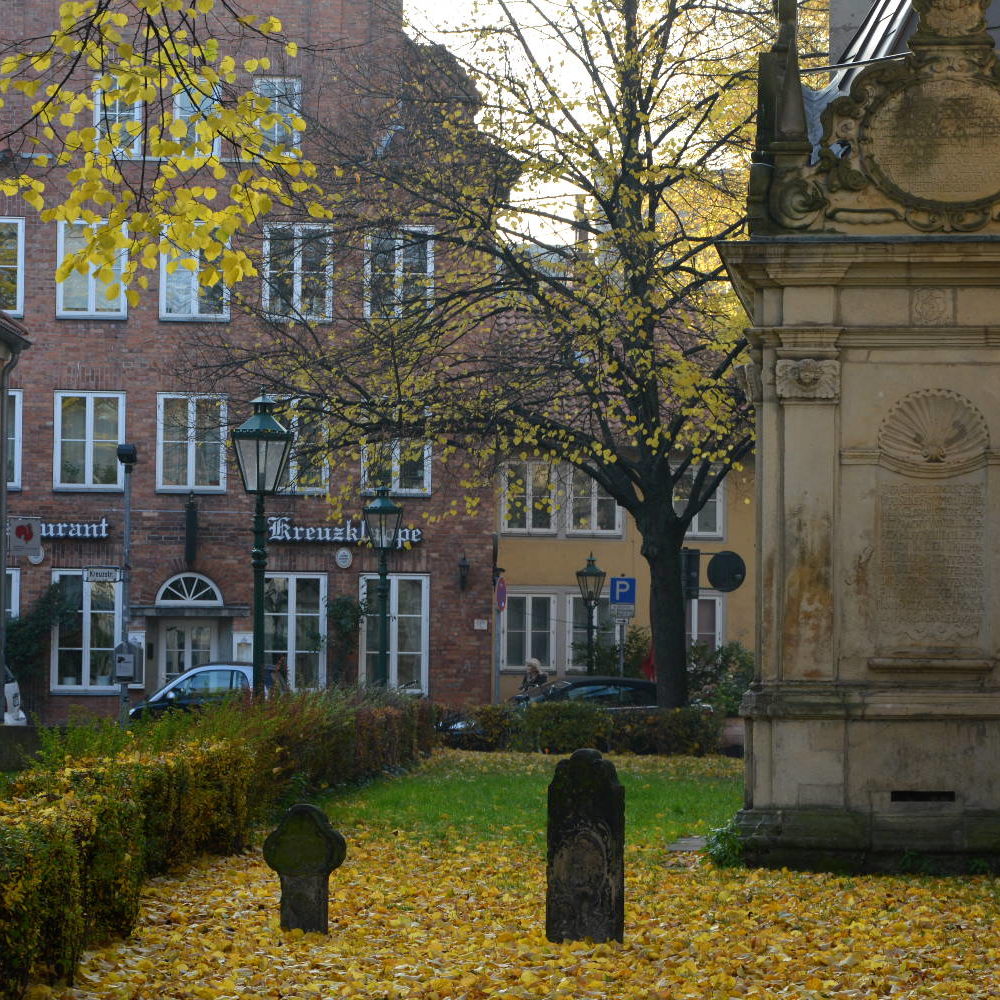The former “Kreuzklappe” is thought to have existed as a feared National Socialist hang-out in the heart of the Altstadt since the summer of 1931. In the old ‘Mitte’ [central district] of Hanover, the hostility between Communists and Nazis is particularly acrimonious.
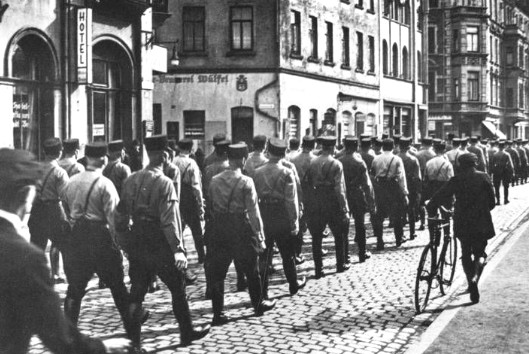
Rise of the NSDAP
The local rise of the Nazis within Hanover evolves contingent on the inhabitants of the various neighbourhoods. The first local branch of the NSDAP [Nationalsozialistische Deutsche Arbeiterpartei, i.e. the National Socialist German Workers’ Party or Nazi Party] is founded as early as July 1921, but, like everywhere else in the German Reich, it remains a far-right splinter party – until the landslide victories during the Great Depression. In September 1930, the brown [Nazi] party rises from obscurity to become Hanover’s third-strongest political force. In the Reichstag elections held in July 1932, it outperforms the SPD [Sozialdemokratische Partei Deutschlands, i.e. Social Democratic Party of Germany], which traditionally was the strong party in Hanover. Nazi strongholds are in the middle-class districts of Oststadt, List, Südstadt, Zoo and Kirchrode. From these safe areas, the party sets out to conquer politically diverse neighbourhoods or districts that oppose them – although the conquest takes place quite literally in the form of street fights.
Taverns are used as bases
Bases – in the form of bars or “SA barracks” [SA is the abbreviation of ‘Sturmabteilung’, literally a “Storm Detachment’, the Nazis’ paramilitary wing or Brownshirts] – play a major role in strengthening their control. “Verkehrslokale” is the name given to local taverns owned by Nazi sympathizers, most of whom are party members – like-minded, they want to socialise with each other. “Sturmlokale” are bars or pubs that serve as meeting places for an “SA-Sturm”, an SA unit. This is where they drink together and it is from here that they go to rallies and brawls with political opponents at in-door gatherings, and later to night-time raids on “Jewish houses”. The Nazis try to “convert” pubs especially in hostile areas and from then on to occupy and defend them. The militant clashes concerning the former workers’ pub “Posthorn” on Deisterstrasse in “Red Linden” [i.e. socialist Linden] are the stuff of legend.
The Altstadt divided
The political extremes clash particularly violently in the socially marginalised milieux of the Altstadt and Calenberger Neustadt. Hanover’s Mitte becomes radicalised to the left as well as to the right: at the end of the Weimar Republic, this is where the KPD [Kommunistische Partei Deutschlands, i.e. German Communist Party] celebrated its greatest successes in Hanover, yet the NSDAP is also stronger here than in other “ordinary folk” districts. For instance, in constituency 59, which includes Ballhofstrasse and Knochenhauerstrasse (according to Schmiechen-Ackermann, see Further reading “Widerstand aus der Arbeiterbewegung” [Resistance from the workers’ movement]). In 1929, this typical “proletarian quarter” still votes for the SPD by more than 50 per cent. In May 1932, the SPD is replaced by the KPD, which receives 42 per cent of the vote, and even in the March 1933 elections the KPD still receives 35 per cent of the vote here. But in autumn 1932, the NSDAP also virtually catches up with the SPD.
Nazi meeting places
Situated at Kreuzkirchhof, the “Zur Kreuzklappe” restaurant, which opened in 1887, enjoys a very dubious reputation in the 1920s and, it being on the fringe of the local red light district, is frequented by criminals and prostitutes. Even before 1933, the tavern was renamed “Restaurant Alt-Hannover” and becomes the notorious meeting place for SA-Sturm 3/13. The owner advertised himself as a PG (a “Parteigenosse”, i.e. a party comrade) and SA man. Within the Hanoverian workers’ movement, they still use the tavern’s old name but with just a slight change: “Haken-Kreuzklappe” [Hakenkreuz = swastika]. According to the social democratic newspaper ” Volkswillen”, it is the “worst dive in Hanover”. At the beginning of 1932, the newspaper repeatedly alleges that Nazis are organising “regular police patrols” against political opponents from his pub. The same happens on Ascension Day in 1932 in neighbouring Calenberg Neustadt: an SA-Sturm stationed at the “Duvestübchen” [a pub] on Duvestrasse engages in a street battle with left-wing workers in front of the pub and surrounding streets. Three of them are wounded, some seriously, by gunfire. When the police arrive, the handguns have vanished.
Kreuzklappe: Destruction and reconstruction
The building in Kreuzstrasse is renovated as part of the “Cleansing and recovery of the Altstadt, then destroyed in air raids in 1943. In 1951, the area around Kreuzkirche is a showcase project for “Constructa”, the international building exhibition, during which the house is rebuilt in its original style. For decades now, it has been a perfectly innocuous restaurant, welcoming guests to enjoy Turkish cuisine – with its old name of “Kreuzklappe”.
Additional online information
Wikipedia entry: Kreuzklappe [in German]
Wikipedia entry: Sturmabteilung (SA)
Further reading: Click here
Texts and images: Michael Pechel

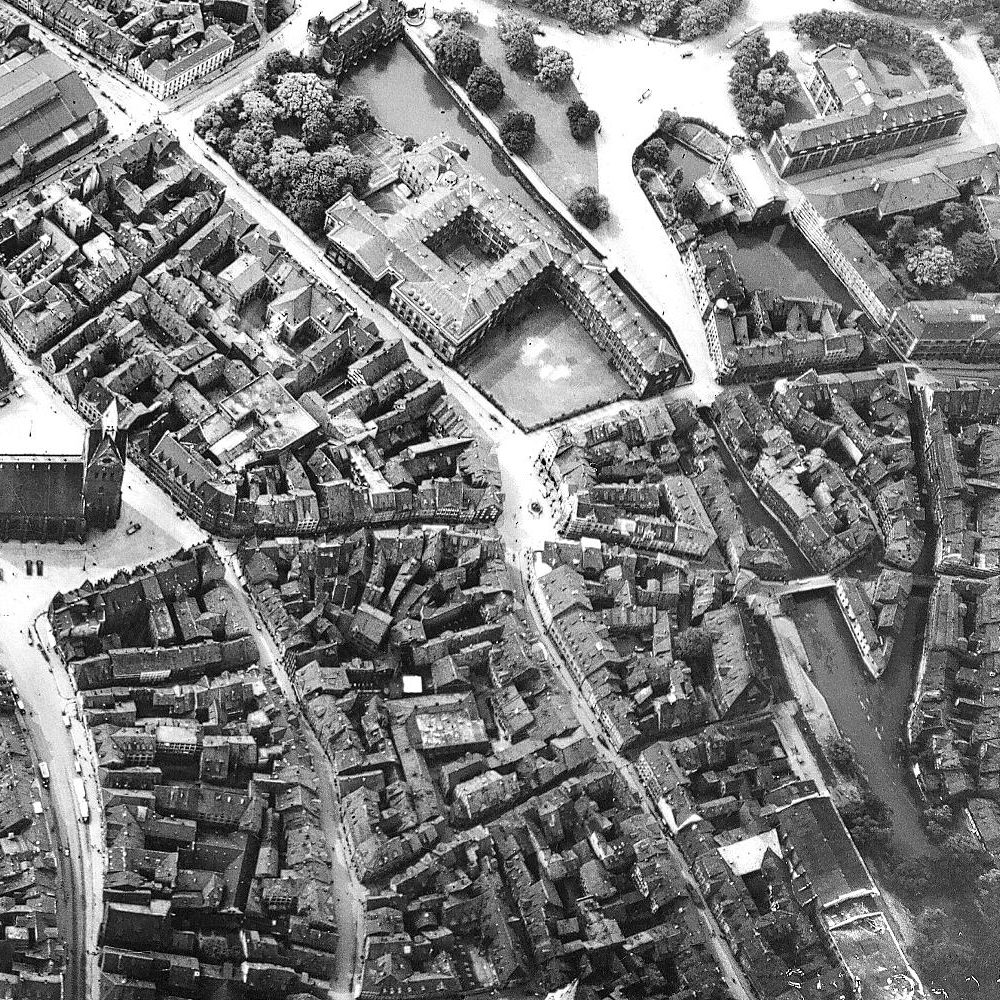
![Hanover: Dammstrasse (now Bohlendamm) looking towards Altstädter Markt during the Reichstag election campaign of 5 March 1933 Photograph from the estate of SA-Sanitäts-Sturmführer [SA medical storm leader] Dr.med. Ulrich G. Werner Heine Collection](https://zukunft-heisst-erinnern.de/wp-content/uploads/2020/04/kreuzstr_4a-589x589.jpg)
![Hanover: Adverts from an SS [Schutzstaffel] publication, 1932. Nds. HStAH No. 752 Sh. 1769](https://zukunft-heisst-erinnern.de/wp-content/uploads/2020/04/kreuzstr_2-847x847.jpg)
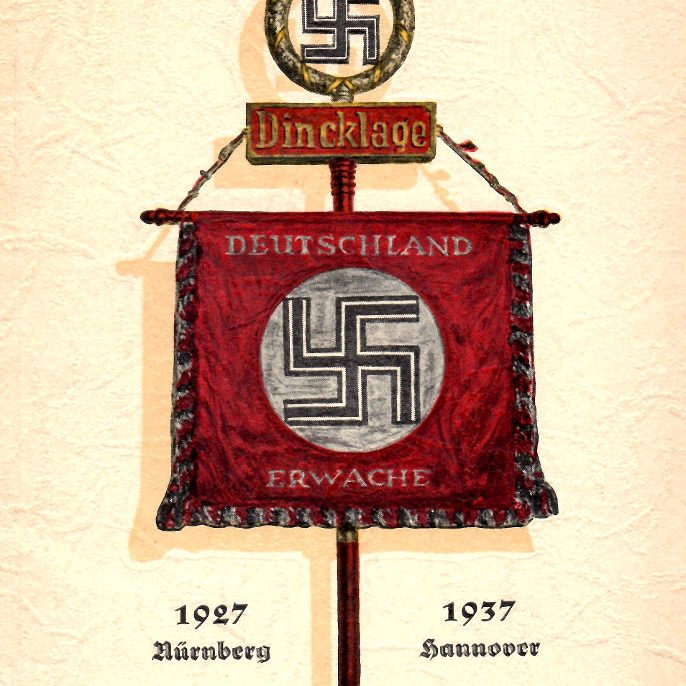
![Hanover: Nazism incorporated into leisure activities. Decorated sandcastle at the Baltic Sea resort of Sellin on the island of Rügen, summer 1933. Photograph from the estate of SA-Sanitäts-Sturmführer [SA medical storm leader] Dr.med. Ulrich G. Werner Heine Collection in Hanover City Archives](https://zukunft-heisst-erinnern.de/wp-content/uploads/2020/04/urlaub_ostsee-1000x1000.jpg)
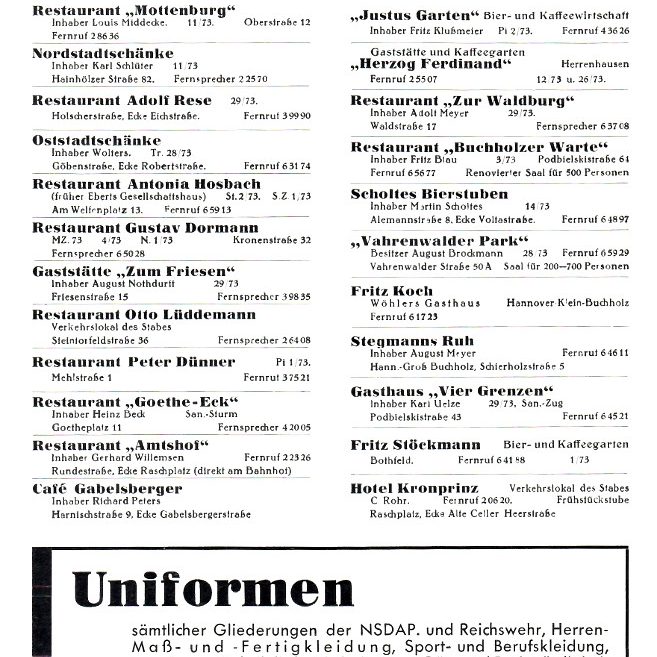
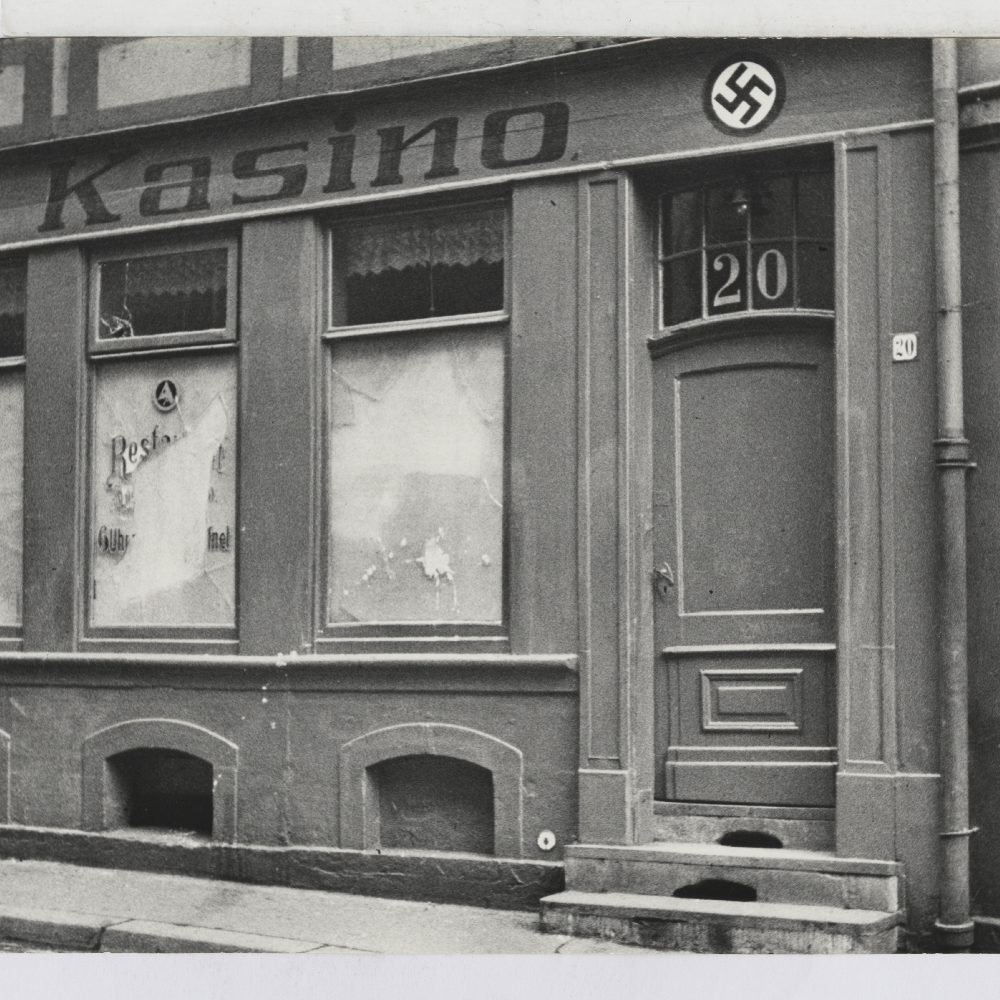
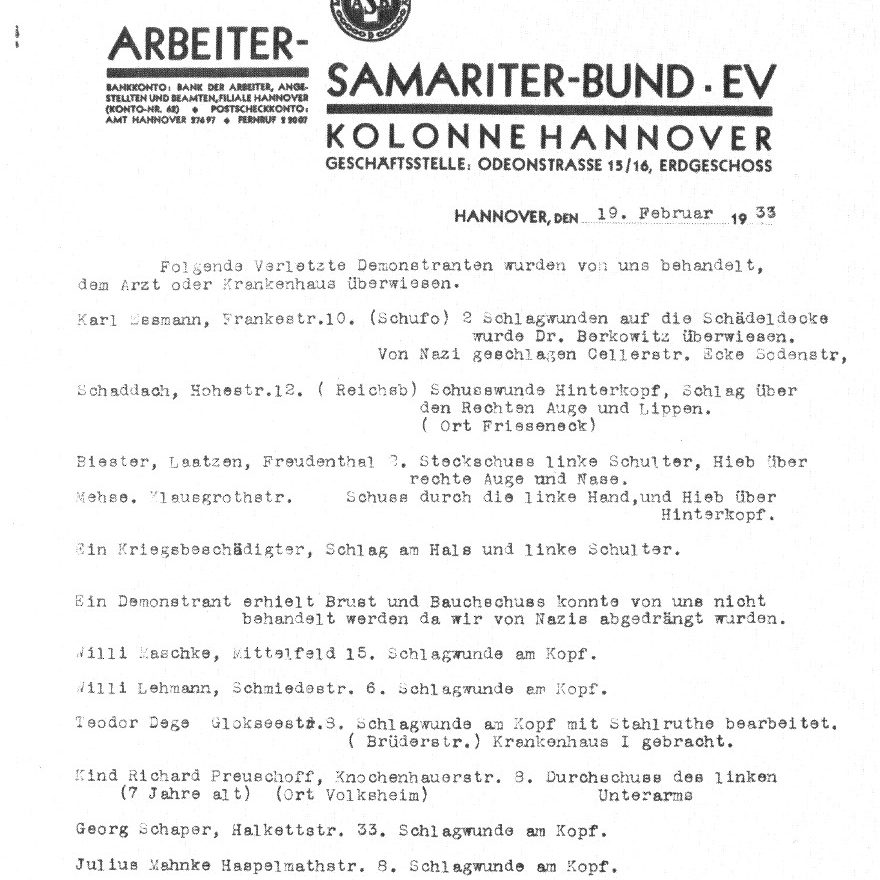
![Hanover: Market stall on the square by the Kreuzkirche, August 1933. In the background of the picture is the building at Kreuzstrasse 6, which was the SA Sturmlokal [tavern] "Alt-Hannover", also referred to as the "Hakenkreuzklappe” [roughly translates as ‘Swastika Hatch’]. Photograph from the estate of SA-Sanitäts-Sturmführer [SA medical storm leader] Dr.med. Ulrich G. Werner Heine Collection in Hanover City Archives](https://zukunft-heisst-erinnern.de/wp-content/uploads/2020/04/kreuzstr_4b-1000x1000.jpg)
